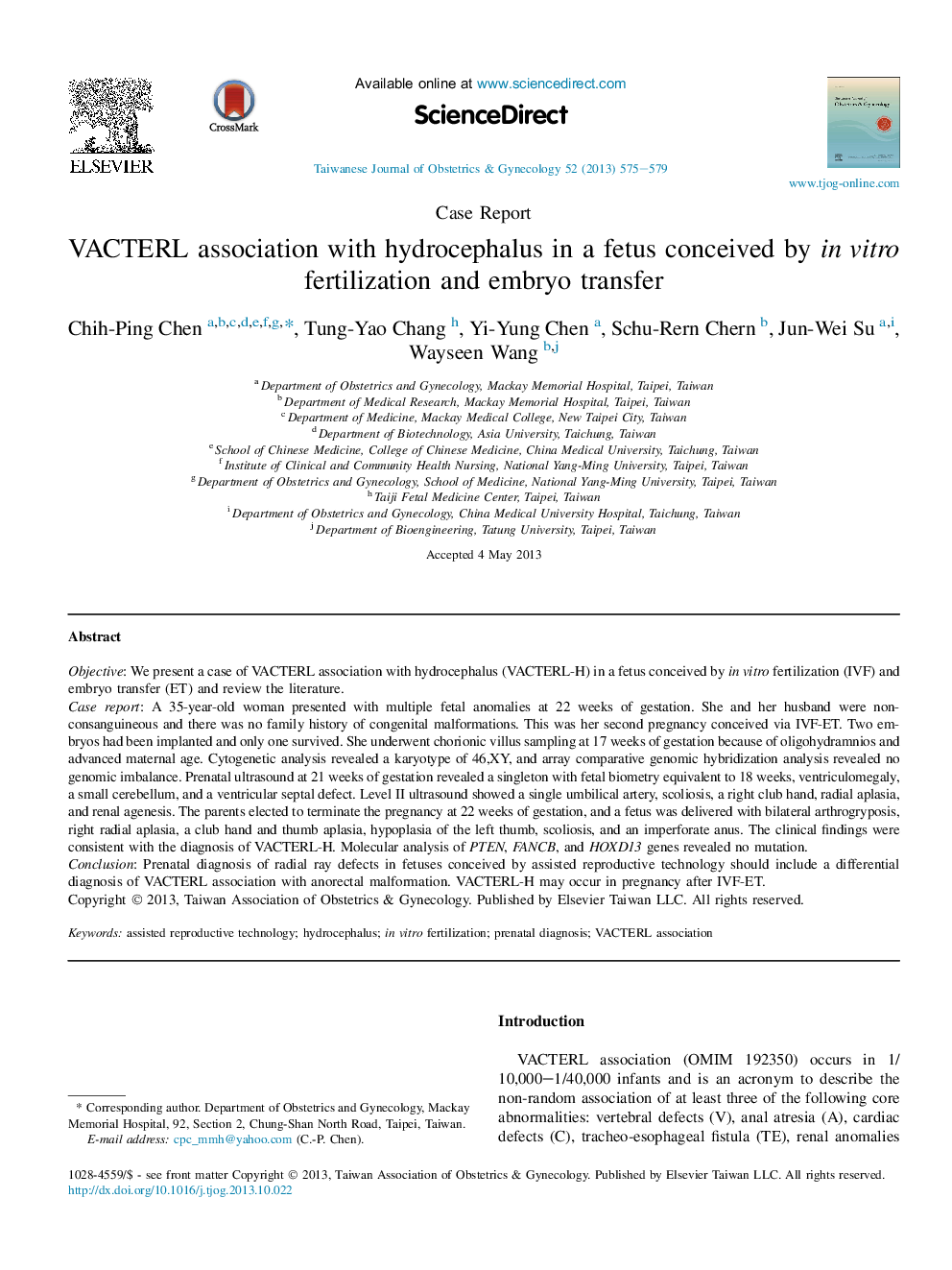| Article ID | Journal | Published Year | Pages | File Type |
|---|---|---|---|---|
| 3975292 | Taiwanese Journal of Obstetrics and Gynecology | 2013 | 5 Pages |
ObjectiveWe present a case of VACTERL association with hydrocephalus (VACTERL-H) in a fetus conceived by in vitro fertilization (IVF) and embryo transfer (ET) and review the literature.Case reportA 35-year-old woman presented with multiple fetal anomalies at 22 weeks of gestation. She and her husband were non-consanguineous and there was no family history of congenital malformations. This was her second pregnancy conceived via IVF-ET. Two embryos had been implanted and only one survived. She underwent chorionic villus sampling at 17 weeks of gestation because of oligohydramnios and advanced maternal age. Cytogenetic analysis revealed a karyotype of 46,XY, and array comparative genomic hybridization analysis revealed no genomic imbalance. Prenatal ultrasound at 21 weeks of gestation revealed a singleton with fetal biometry equivalent to 18 weeks, ventriculomegaly, a small cerebellum, and a ventricular septal defect. Level II ultrasound showed a single umbilical artery, scoliosis, a right club hand, radial aplasia, and renal agenesis. The parents elected to terminate the pregnancy at 22 weeks of gestation, and a fetus was delivered with bilateral arthrogryposis, right radial aplasia, a club hand and thumb aplasia, hypoplasia of the left thumb, scoliosis, and an imperforate anus. The clinical findings were consistent with the diagnosis of VACTERL-H. Molecular analysis of PTEN, FANCB, and HOXD13 genes revealed no mutation.ConclusionPrenatal diagnosis of radial ray defects in fetuses conceived by assisted reproductive technology should include a differential diagnosis of VACTERL association with anorectal malformation. VACTERL-H may occur in pregnancy after IVF-ET.
